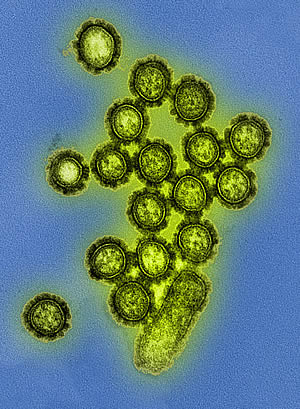 Background
BackgroundA severe pandemic (defined as a worldwide epidemic) in a vulnerable population, such as the 1918 flu pandemic, represents a worst-case scenario for pandemic planning and preparedness. Communities, individuals, employers, schools, and other organizations are being asked to plan for the use of interventions that will help limit the spread of disease. Pandemic concerns escalated due to spread of avian influenza (H5N1) virus, which has the potential to threaten human health, among animals in Asia, Africa, the Middle East, and Europe. In 2009 a pandemic occurred from a new influenza virus called H1N1 (referred to as “swine flu” early on). This virus is spreading from person to person worldwide. Health experts are predicting that we will see a continuation of the spread of the H1N1 influenza virus.
General Precautions
Observe general precautions including hand washing, avoiding contact with possibly infected poultry, or consuming undercooked poultry or poultry products.
If one of your family or household members becomes ill, they should be isolated in a separate room. If several members are sick, they can be isolated in the same room. When caring for those who are ill, you will need some appropriate personal protective equipment (PPE), including the following:
- Disposable vinyl, nitrile, or latex gloves or other reusable gloves that can be disinfected.
- Protective clothing (long sleeved coveralls with a waterproof apron) or a disposable surgical gown.
- Disposable shoe covers or those that can be disinfected.
- Safety goggles or face shield.
- Wear at least the minimum level of respiratory protection, which is a surgical mask or preferably an N95 respirator.
- These items must be removed in the proper sequence to avoid contaminating yourself.
Cups, glasses, dishes, all eating utensils, and thermometers must be disinfected after use by the ill person. The eating utensils can be disinfected either by use of a dishwasher or dishwater with 1.5 tsp. of household bleach to one gallon (3.8 liters) of water. Remember that handling these items while they are still contaminated will lead to possible infection. Therefore, wear gloves while handling potentially contaminated items.
Surfaces in the room of the infected persons should be cleaned with a solution of bleach water as noted above or with Lysol® or Clorox® spray, wipes, or liquid. Pay particular attention to faucets, doorknobs, telephones, the refrigerator, the oven, and toilet flush handles. This should be done whenever there is contact by an infected person or 2-3 times a day. Linens and clothing need to be washed in warm water with detergent and preferably dried in a dryer. Remember, if you are not careful in your personal protective wear and hygiene measures, you may carry infected material on your skin or clothing, which may contaminate others or yourself. Designate a specific garbage bag for infected, disposable materials.
Isolation
If you develop flu-like symptoms, stay home and isolated from your household except to seek medical care. Remain at home until at least 24 hours after you are free of fever (100° F [37.8° C] or greater) or signs of a fever without the use of fever-reducing medications. Seek medical care if you have signs of pneumonia or severe lung infection (difficulty breathing, wheezing, or a persistent fever over 102° F or 38.9° C).
If there are other cases of influenza in your neighborhood, it would be safest to keep your children in your yard or home away from others who may be infected. Plan in advance what will need to be done or who you can call upon if you are either alone, ill and incapacitated, or if the adults in the household become ill and incapacitated. Talk with family members and loved ones about how they would be cared for if they got sick or what will be needed to care for them in your home.
Schools and daycare facilities will likely close. Plan your child care in advance and how you might function by working at home, for example, or how college-age family members can assist in child care during the time their colleges and universities are closed. Having multiple younger children from several households in one home for daycare is less than optimal due to the high risk of spreading the disease.
Limit your exposure to public places; this may include a grocery trip only once a week rather than every few days. In addition to the recommended food and water storage items, keep a supply of your prescription medications, nonprescription drugs, and other health supplies on hand, including pain relievers, stomach remedies, cough and cold medicines, fluids with electrolytes, vitamins, rubbing alcohol, thermometers, garbage bags, and cleaning supplies. Keep your car filled with gas and have cash on hand in case banks are closed or services are limited. Use the over-the-counter medications as directed on the container.
Maintain social distancing (see the Pandemic Planning—Social Distancing fact sheet for more details) and stay at least six feet away from others at all times, particularly in public. Avoid shaking hands and other forms of contact. Use proper cough and sneeze etiquette even if you are not ill (see the Pandemic Planning—Personal Hygiene fact sheet for more details). Be sure to teach your children the proper hand washing and cough and sneeze behaviors as well. If you are ill, you need to be isolated from those who are healthy, even in your own household.



No comments:
Post a Comment